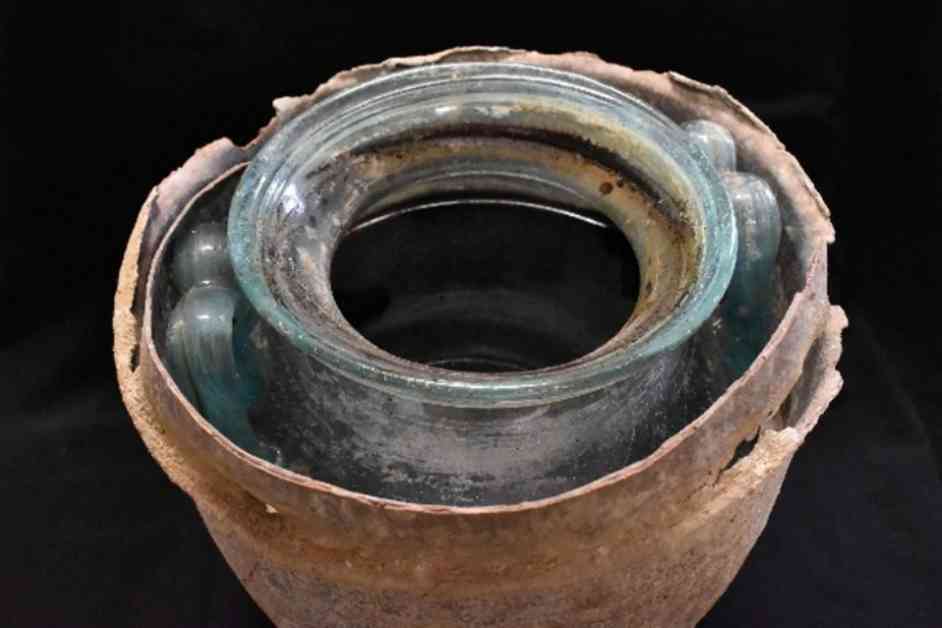In 2019, a remarkable discovery was made in the town of Carmona in southwestern Spain. During construction work, an excavation team unearthed a sealed burial chamber dating back to the early first century C.E. that had been undisturbed for 2,000 years.
Within this burial chamber, six of the eight wall niches contained urns and grave goods, including a bottle with residue of perfume. However, it was niche L-8 on the right side of the entrance that held a surprising find. Inside a glass urn placed in a lead case was a reddish liquid that turned out to be 2,000-year-old white wine, making it the oldest wine still in liquid form in the world.
Although the wine was no longer drinkable and was never intended to be consumed, it provided valuable insights into ancient Roman burial practices. The presence of bone remains and a gold ring at the bottom of the vessel indicated that it was part of the funerary offerings for the deceased, who had been cremated in accordance with Roman traditions.
To confirm the identity of the liquid as wine, chemical analysis was conducted by a team led by chemist José Rafael Ruiz Arrebola. The presence of various polyphenols, which are characteristic compounds found in wine, pointed towards the liquid being wine. Interestingly, the absence of syringic acid, a compound found in red wine, led the researchers to conclude that the ancient wine was actually white.
The mineral composition of the wine also aligned with the characteristics of modern sherry and fino wines produced in regions near Carmona, providing further evidence of the historical significance of winemaking in the area. The research team’s findings were published in the Journal of Archaeological Science: Reports, shedding light on the cultural practices and traditions of the ancient Romans in the region.
This discovery not only showcases the longevity of wine but also highlights the intricate relationship between wine and ancient rituals. The presence of such a well-preserved liquid after two millennia offers a glimpse into the past and the importance of wine in ancient societies. It serves as a reminder of the enduring legacy of winemaking and its significance in human history.

